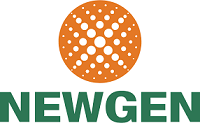What Is Robotic Process Automation Software
Robotic Process Automation (RPA) software is a form of technology that allows businesses to automate repetitive and manual operations with intelligent bots. These bots mimic human actions and connect with digital systems to perform a variety of commercial functions, including data entry, transaction processing, and communication with other systems.
RPA software may do rule-based, predictable operations that do not involve human judgment, such as gathering data from many sources and entering it into a specific system. This technology is very adaptable and can be tailored to meet specific business requirements, making it appropriate for a wide range of industries such as banking, healthcare, and retail.
One of the primary benefits of RPA software is its ability to work continuously, without interruption, making it a cost-effective alternative for firms trying to improve operational efficiency. Furthermore, the program can be integrated with current IT systems, removing the need for manual data entry and lowering the risk of errors.
When selecting RPA software, buyers should evaluate ease of use, interoperability with current systems, scalability, and vendor support. Buyers should also look for sophisticated technologies like machine learning and cognitive automation, which can expand the software's capabilities and allow it to tackle more difficult jobs.
RPA software allows firms to streamline operations, cut operational expenses, and free up staff to focus on higher-value jobs. Companies may enhance efficiency and remain competitive by automating dull and repetitive processes. However, choosing the correct RPA software is critical, and customers must conduct extensive research and comparisons to find the greatest fit for their specific business requirements.
What Are The Recent Trends In Robotic Process Automation Software?
In recent years, the use of Robotic Process Automation (RPA) software has grown significantly across industries. This technology has changed the way businesses run by automating repetitive and mundane operations, freeing up vital time and resources for more productive work. As the demand for RPA software grows, several important patterns have emerged to shape the industry landscape.
Buyers should be aware of the following significant trends when purchasing in RPA software:
1. Intelligent Automation: While traditional RPA software automates rule-based processes, the advent of artificial intelligence (AI) and machine learning (ML) has led to the birth of intelligent automation. This implies RPA can now handle more complicated and unstructured data, increasing its versatility and adaptability to various business processes.
2. Cloud Adoption: RPA software is becoming available as a cloud-based solution, making it easier and less expensive for enterprises to use. This trend also enables speedier deployment and scalability, making it desirable to businesses of all sizes.
3. Integration With Other Technologies: RPA is frequently integrated with other technologies like AI, machine learning (ML), and natural language processing (NLP) to produce more powerful automation solutions. This integration enables RPA to tackle more complicated jobs and make better decisions, boosting its value to enterprises.
4. Focus On Analytics And Data-Driven Insights: As RPA becomes more sophisticated and integrated with other technologies, it will be able to collect and analyze massive volumes of data. This enables firms to obtain useful insights into their processes and find opportunities for improvement and efficiency.
5. Democratization Of RPA: Previously, RPA software required highly technical expertise to develop and maintain. However, with the emergence of low-code or no-code solutions, non-technical personnel may now easily create and operate RPA bots. This development has made RPA more accessible to a broader spectrum of enterprises, hence creating new potential for automation.
6. Increased Emphasis On Security: With the rise of cybercrime and data breaches, there is growing worry about the security of RPA technology. As a result, RPA vendors are increasingly emphasizing security features like encryption, access controls, and audit logs to protect sensitive data.
Benefits Of Using Robotic Process Automation Software
Introduction: Robotic Process Automation (RPA) software has quickly acquired favor among businesses due to its potential to streamline processes, boost productivity, and save costs. This innovative technology has transformed how firms work by automating repetitive and mundane processes.
Let's explore, we'll look at the advantages of utilizing RPA software and how it can improve your business operations.
1. Saves Time And Increases Efficiency: One of the key advantages of adopting RPA software is that it drastically reduces the time required to accomplish jobs. RPA enables your employees to focus on more vital and high-value activities, increasing productivity. Businesses can achieve more productivity using RPA since robots can work continuously without breaks or errors.
2. Cost Savings: RPA software provides significant cost savings to enterprises. With automation, the need for manual work decreases, resulting in lower labor expenses. Furthermore, RPA removes human error, which reduces the likelihood of costly mistakes. According to studies, using RPA can save operating costs by up to 80%.
3. Scalability: Another key advantage of RPA software is its scalability. As your company grows, RPA can quickly adjust to manage larger workloads and more complicated jobs at no additional expense. This makes it a perfect alternative for firms who want to scale their operations without making large investments in resources.
4. Improved Accuracy: RPA software can help you achieve high levels of accuracy in your processes. Robots eliminate human errors, which improves total work quality. This, in turn, leads to increased client satisfaction and trust in your brand.
5. Increased Compliance: RPA has the potential to transform businesses where compliance is critical. RPA creates a full trail of all completed activities, making it easier for enterprises to track and audit their operations. This guarantees that all corporate processes comply with regulations, reducing the likelihood of penalties and fines.
6. Improved Customer Experience: By automating manual processes, organizations may allow their workers to focus on providing outstanding customer service. This improves the customer experience, which can lead to increased loyalty and retention.
7. Easy Integration: RPA software integrates smoothly with your existing systems, making it a simple and cost-effective solution to employ. This reduces the need for large IT resources, allowing organizations to begin reaping the benefits of RPA immediately.
Important Factors To Consider While Purchasing Robotic Process Automation Software?
When considering acquiring robotic process automation (RPA) software, you should carefully assess your requirements and options. RPA software can significantly enhance workflow efficiency and production, but there are some important considerations to consider before making a purchase.
Here are some crucial aspects to consider while selecting RPA software:
1. Define Your Wants And Requirements: Before beginning your search, determine your company's demands and the tasks that you want the RPA software to complete. This will allow you to narrow down your alternatives and select software that best meets your specific demands and workflows.
2. System Compatibility: It is critical to confirm that the RPA program works with your current systems and software. This will prevent integration issues and guarantee that your procedures run smoothly.
3. User-Friendly Interface: Look for RPA software that is straightforward to use and navigate. This will help your employees learn the program more quickly and promote its adoption.
4. Scalability: As your firm expands, you may need to automate additional procedures. It is critical to select RPA software that is scalable and can handle an increase in workload without problems.
5. Reliability And Support: Be sure to select a reputable and dependable RPA software vendor. Investigate their customer support services and check that they provide prompt assistance in the event of any technological concerns.
6. Security Features: Security is an important consideration when using RPA software to handle sensitive data. Ensure that the software includes strong security features like encryption, access limits, and data backup.
7. Expense: Because RPA software can be a major investment, it is critical to weigh the expense against the possible ROI. Look for pricing models that fit your budget and provide transparent pricing structures.
8. Customization And Flexibility: Each business has its own set of operations and requirements. Choose RPA software that allows you customization and flexibility to meet your individual requirements.
9. Customer Reviews And Feedback: Reading customer reviews and feedback can provide useful information about the software's performance, usability, and customer satisfaction. This will allow you to make an informed decision.
Consider these critical elements to ensure that you get the best robotic process automation software for your company. Before making a purchase, it is essential that you conduct thorough research and examine numerous possibilities. This will enable you to make an informed decision and maximise the benefits of RPA for your organization.
What Are The Key Features To Look For In Robotic Process Automation Software?
When looking for Robotic Process Automation (RPA) software, it's critical to examine the main characteristics that will best meet your company's demands. RPA software is intended to automate repetitive and time-consuming operations, hence increasing efficiency and accuracy within a company.
Here are some crucial aspects to look for when selecting RPA software for your business:
1. User-Friendly Interface: The program should have an intuitive interface that is simple to navigate and utilize. This will guarantee that the deployment and adoption process runs well within your organization.
2. Compatibility: RPA software should work with a variety of systems and applications, including legacy systems, to facilitate smooth integration and automation.
3. Scalability: As your company grows, the RPA software should be able to manage a growing number of procedures and tasks while maintaining performance.
4. AI Capabilities: Advanced RPA software that incorporates artificial intelligence (AI) may learn from previous interactions and make data-driven judgments, resulting in more efficient and accurate automation.
5. Analytics And Reporting: Look for RPA software that has powerful analytics and reporting capabilities, like as real-time dashboards and configurable reports, to help you monitor and analyze performance, discover bottlenecks, and make data-driven choices.
6. Security Features: Because RPA software handles sensitive data, it's critical to select a program with strong security features, such as data encryption, to guarantee it fulfills compliance and regulatory requirements.
7. Exception Handling: A competent RPA software should be able to handle unforeseen events and faults that arise throughout the automation process.
8. Support And Training: Select an RPA software vendor that provides full support and training to ensure the platform's successful implementation and acceptance inside your firm.
9. Cost-Effectiveness: Think about the whole cost of the RPA software and its possible return on investment. Look for software that allows you to customize your price schemes and provides a clear cost breakdown.
10. Customer Reviews And Reputation: Before making a selection, conduct research and read customer reviews to gain insight into the software's reputation and track record of success.
Why Do Businesses Need Robotic Process Automation Software?
Businesses require robotic process automation (RPA) technologies to streamline processes, increase efficiency, and boost production. RPA technology employs intelligent bots to automate repetitive and rule-based operations, freeing up employees' time to focus on more difficult and valuable work. This not only lowers human mistake, but also saves time and money for the organization.
One of the most important reasons why firms should invest in RPA software is to reduce manual and labor-intensive operations. These processes are not only time-consuming, but also error-prone, which can lead to costly mistakes. RPA software automates these operations to ensure consistent and accurate execution, hence enhancing overall corporate performance.
Furthermore, RPA technology can easily handle massive volumes of work, making it perfect for firms with a lot of data and processes. Unlike human personnel, the software can operate 24/7, resulting in a huge boost in production and efficiency. Another advantage of RPA software is that it seamlessly integrates with current systems and applications.
This implies that firms are not need to change their existing software, which may be costly and time-consuming. RPA automates processes in the existing system, resulting in a seamless and efficient solution. RPA software not only automates operations, but it also offers real-time data and analytics, providing businesses with important insights into their processes.
This enables firms to discover bottlenecks and make data-driven decisions to enhance their procedures. In addition to increasing operational efficiency, RPA software can help firms cut costs. Organizations can save money on hiring and training by lowering their reliance on manual labor. Furthermore, RPA software requires less maintenance, making it an affordable choice in the long run.
Furthermore, with the development of remote work and the need for organizations to adapt to a digital world, RPA software has become increasingly important. The program can automate jobs and procedures from anywhere, allowing firms to function remotely and without interruption.
How Much Time Is Required To Implement Robotic Process Automation Software?
The time required to integrate robotic process automation software varies substantially depending on the complexity of your company processes and the software you use. On average, companies may anticipate to spend 6 to 12 weeks on a successful deployment. Your organization's degree of preparation is one of the most important elements influencing implementation time.
This includes gaining a thorough understanding of your present business processes and identifying possible opportunities for automation. Furthermore, having a competent project team in place with dedicated resources can greatly accelerate the implementation process. The type of robotic process automation software you use might also influence implementation time.
Some software may require substantial customization and interaction with current systems, which might lengthen the overall deployment period. However, more user-friendly and intuitive software may take less time for training and onboarding, resulting in a faster adoption process. It is also critical to consider the time required for testing and troubleshooting to ensure seamless and efficient automation.
This may add a few weeks to the implementation timetable, but it is essential for a successful and sustainable automation process. Overall, plan for at least 6 to 12 weeks to adopt robotic process automation software. This will allow for thorough planning, training, and testing to guarantee that your business operations are automated smoothly and successfully.
What Is The Level Of Customization Available In Robotic Process Automation Software?
The level of customisation accessible in Robotic Process Automation (RPA) software varies by tool and vendor. However, most RPA software provides a high level of customization to meet the unique demands of enterprises. One of the primary benefits of RPA is its ability to automate repetitive jobs and procedures, resulting in significant time and cost savings.
To accomplish this, RPA software supports a wide range of customizations, including the ability to create unique processes, automate certain data inputs, and integrate with a variety of third-party apps. Many RPA systems allow firms to generate unique dashboards and reports by customizing the user experience and design. This not only improves the user experience, but also enables for more efficient process tracking and monitoring.
Furthermore, RPA software frequently includes pre-built templates and modules that may be tailored to a company's specific needs. This helps to streamline the automation process and reduce the time and resources required for deployment. Buyers must carefully analyze the level of customization provided by various RPA systems before making a purchasing decision. Some software may include more advanced customization possibilities, but others may have a more user-friendly interface. It is critical to select a tool that is compatible with your business objectives and needs.
Which Industries Can Benefit The Most From Robotic Process Automation Software?
Robotic Process Automation (RPA) software is gaining popularity in a wide range of industries due to its capacity to automate repetitive and time-consuming operations, boost productivity, and eliminate human error. While RPA can help every firm streamline its procedures, certain industries will gain the most from this technology.
Let's explore, we'll look at the top industries that can use RPA software to improve their operations and drive success.
1. Banking & Finance: The banking and finance industries deal with massive amounts of data and transactions on a regular basis. This makes it an ideal choice for RPA implementation. Financial companies can use RPA to automate operations such as data input, loan processing, and account reconciliation, allowing their workers to focus on more lucrative tasks that require human judgment.
2. Healthcare: RPA can help increase efficiency in industries where accuracy and timeliness are critical, such as healthcare. RPA may automate operations like patient data input, claims processing, and insurance verification, allowing healthcare personnel to focus more on patient care.
3. Supply Chain & Logistics: The supply chain and logistics industries rely on manual procedures ranging from data entry to order tracking. Companies in this business can use RPA to eliminate errors, increase tracking and visibility, and speed up the delivery process. This can lead to cost savings, enhanced productivity, and more customer satisfaction.
4. Human Resources: Administrative operations like data entry, onboarding, and payroll processing can be time-consuming for HR departments. These chores can be readily automated using RPA, freeing up HR experts to focus on more strategic objectives such as employee development and engagement.
5. Manufacturing: The industrial business is continually changing and requires a high degree of precision and efficiency. Manufacturers can use RPA to automate repetitive processes like inventory management, order processing, and production scheduling. This can result in cost savings, increased productivity, and faster time to market.
6. Retail: In the highly competitive retail market, organizations are continuously seeking for methods to enhance procedures and cut costs. RPA can transform retail by automating processes like inventory management, order fulfillment, and customer support. This not only saves time and avoids errors, but it also frees up merchants' time to focus on improving the consumer experience.
Conclusion
To summarize, Robotic Process Automation (RPA) software is an invaluable resource for firms seeking to improve efficiency, streamline operations, and decrease human error. It has a wide range of features and capabilities that can automate dull and repetitive processes, allowing staff to focus on higher-value work. When comparing RPA software choices, it is critical to examine your organization's specific goals and objectives.
Consider elements like process mapping, AI and machine learning capabilities, and integration with existing systems. Another important factor to consider is the amount of training and support offered by the software manufacturer. RPA implementation and maintenance need technical skills, so it is critical to select software that provides thorough training and tools for successful adoption. Pricing is also an important consideration while selecting an RPA software.
Some providers use a subscription model, while others charge per process or transaction. Analyze your organization's budget to decide which pricing plan is most cost-effective for your company. Finally, selecting the correct RPA software can substantially assist your organization, but it is critical to conduct extensive study and compare several solutions before making a selection. RPA, with its capacity to boost efficiency and accuracy, can assist firms in remaining competitive and thriving in an ever-changing business context.






















